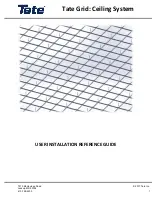
Matters to Be Observed When Using This Product
A capacitor conforming to "AEC-Q200" refers to a capacitor having passed some or all of evaluation test items defined
in AEC-Q200.
To know the detailed specifications of each capacitor or specific evaluation test scores, please contact us.
We issue a delivery specification sheet for each product ordered. Please confirm the delivery specification sheet when
you place an order with us.
■
To prevent a case where a transient load (e.g., a pulse applied for a short period) too large for the filter to handle is
applied to the filter, make sure to evaluate and confirm the operation of the filter incorporated in your product. Applying
a voltage or current larger than the rated voltage or current to the filter may impair its performance and reliability. Make
sure to use the filter with voltage or current equal to or lower than the rated voltage or current. The product warranty does
not cover usage where an excessively large load, such as a pulse current, is applied to the product.
■
Be careful that unusual stress caused by an excessive bend of the printed board is not applied to the resistor. Design the
circuit structure such that the resistor is not close to a perforated line for board splitting or on a line with sizable holes
bored on the board.
■
When a different component is mounted on the board where the resistor has been soldered, be careful that the board
does not bend excessively. If necessary, provide the board with backup pins (support pins) to keep it straight.
■
Avoid manual board splitting. Use a jig, etc., to break the board so that it does not bend excessively when split apart.
■
When the product is used under mounting conditions departing from mounting conditions specified in our specification
sheet, the product may be exposed to unexpected stress to fail. Be careful to avoid such a case. Make sure to evaluate
and confirm the operation of the filter incorporated in your product and determine whether the filter is usable as a
component of the product.
■
Set soldering conditions for the resistor within the recommended soldering conditions specified by our company. Any time,
soldering condition departing from the specified soldering condition, such as a high peak temperature or a long heating
may impair the performance/reliability of the resistor. Note that the specified soldering conditions indicate conditions
under which degradation of the resistor characteristics does not occur but do not indicate conditions under which stable
soldering can be performed. Check and set individual conditions under which stable soldering can be performed.
■
Heat the resistor in advance so that a difference between the soldering temperature and the temperature of the resistor
surface is reduced to 100
℃
or lower. When dipping the soldered resistor in a solvent, etc., to cool the resistor rapidly,
ensure that the temperature difference between the resistor and the solvent is 100
℃
or lower during the dipping.
■
When soldering the filter using a soldering iron, apply hot air, etc., to the filter to heat it sufficiently in advance and then
solder the filter without bringing the soldering iron tip into contact with the product. If the temperature of the soldering iron
tip is high, finish the soldering work quickly (within 3 seconds when the temperature of the soldering iron tip is 350°C or
lower). The volume of solder (filet size) used when mounting the filter on the board may affect the performance of the filter.
Make sure to confirm the solder volume of the soldering work on the actual product.
■
Soldering the resistor with too much solder or too little solder results in the poor reliability of the solder connection of the
resistor. Use the proper volume of solder in the soldering process. Sufficiently check for the volume of solder used.
■
Soldering with high bond strength or special property solder may affect the quality of the resistor. Do not use such solder.
■
Use rosin-based solder flux. When using highly active solder flux made mainly of halogen (chlorine, bromine, etc.), flux
residues may affect the performance and reliability of the resistor. Check the effects of flux residues before using the solder
flux. Do not use highly acidic flux, water-soluble flux, or flux containing fluoride ions. When solder flux sticks to the resistor
after the soldering process, the activation energy of the flux may corrode the resistor and cause it to fail. Prevent solder flux
from sticking to the resistor.
Keeping the product in the following environments or conditions may lead to degradation of its performance, solderability, etc.
Do not keep the product in the following environments.
(1) Stored in a place where the product is heavily exposed to sea breeze or a corrosive gas, such as Cl
2
, H
2
S, NH
3
, SO
2
,
or NO
X
.
(2) Stored in a place where the product is exposed to direct sunlight.
(3) Stored in a place where a temperature condition of 5
℃
to 35
℃
and a relative humidity condition of 45% to 85% cannot
be maintained.
(4) Kept in storage for more than one year from the delivery date (when the product is kept in conditions excluding any of
the environments (1) to (3)).
30-Jun-23
Reliability and product life
Circuit design and circuit board design
Mounting conditions
Storage conditions
Downloaded from
























